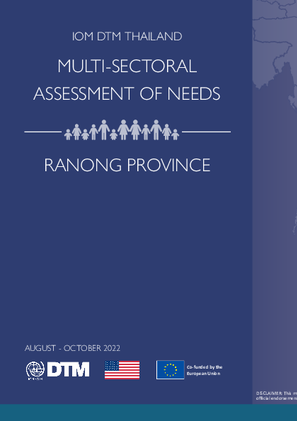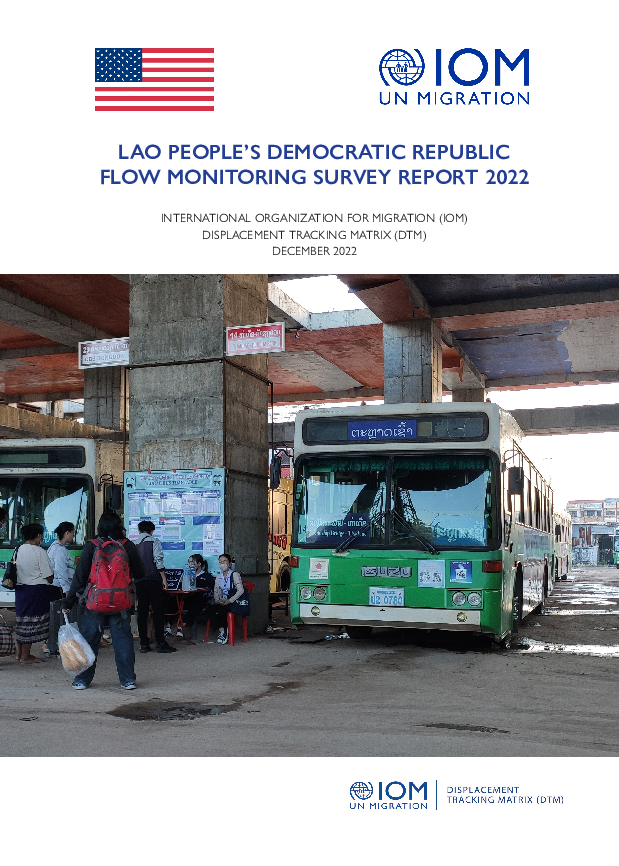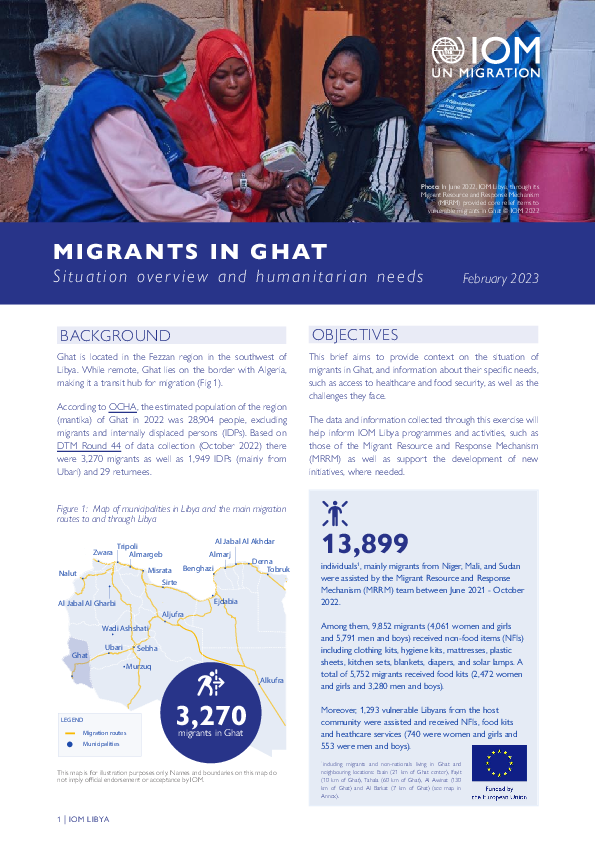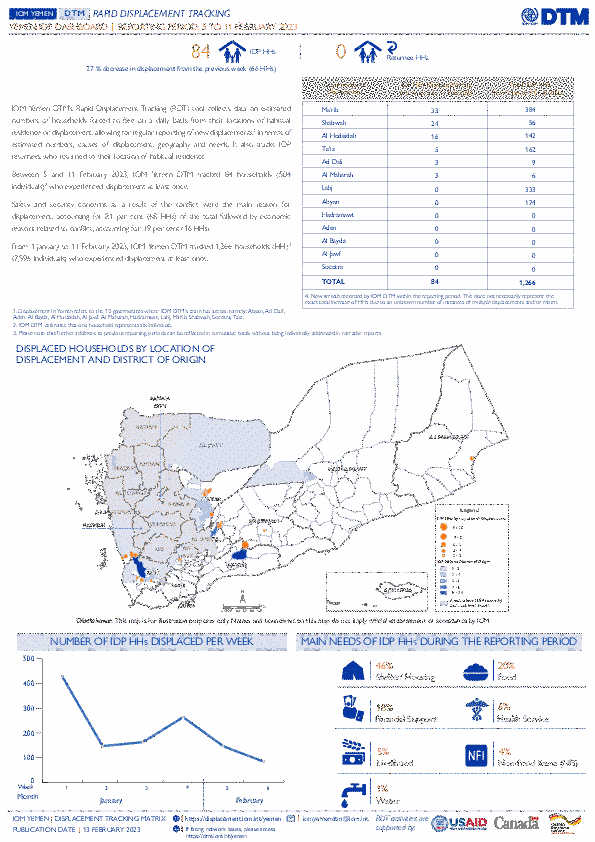-
Countries
-
Data and Analysis
-
Special Focus
-
Crisis Responses

Contact
DTM Europe, DTMMediterranean@iom.int
Language
English
Location
Republic of Moldova
Period Covered
Apr 16 2022
Nov 18 2022
Activity
- Survey
- Return Intention
Începând cu 24 februarie 2022, ucrainenii și resortisanții țărilor terțe au plecat din Ucraina în țările vecine ca urmare a războiului din Ucraina. Potrivit Inspectoratului General al Poliției de Frontieră din Republica Moldova, până la 20 noiembrie, la punctele de trecere a frontierei (PTF) au fost înregistrați în total 698.131 de refugiați din Ucraina și resortisanți ai țărilor terțe la intrarea din Ucraina în Republica Moldova. În același timp, au fost raportate și circulații de persoane care au revenit în Ucraina. Potrivit aceleiași surse, 370.918 de cetățeni ucraineni și resortisanți ai țărilor terțe, care au intrat în Republica Moldova, prin toate punctele de control la frontieră începând cu 24 februarie 2022, s-au întors în Ucraina (Sursa: Inspectoratul General al Poliției de Frontieră).
Din aprilie 2022, Organizația Internațională pentru Migrație (OIM) a efectuat prin intermediul CBS Axa Research sondaje cu adulți (18 ani și peste) care au revenit în Ucraina. Sondajul privind întoarcerea în Ucraina face parte din activitățile Matricei de estimare a mobilitatii umane ale OIM, menite să monitorizeze modelele de deplasare, fluxurile și intențiile de deplasare, regiunile de origine și cele mai imediate nevoi ale refugiaților din Ucraina și ale resortisanților țărilor terțe, care au fugit din Ucraina în țările vecine și în alte țări europene începând cu 24 februarie 2022 și care se întorc în Ucraina. Acest raport prezintă o analiză a evoluției profilurilor sociodemografice, a caracteristicilor de călătorie, a regiunilor de origine, a nevoilor umanitare și a intențiilor respondenților de-a lungul timpului, în perioada 16 aprilie - 18 noiembrie. În această perioadă, au fost intervievate 6 173 de persoane, dintre care majoritatea erau cetățeni ucraineni (95%), în timp ce trei la sută erau resortisanți ai țărilor terțe și doi la sută – cetățeni moldoveni. Datele au fost colectate la trei PTF-uri principale din Republica Moldova spre Ucraina: la PTF Otaci (45%), la PTF și centrul de tranzit Palanca (50%), la PTF Tudora (4%). Persoanele care trec frontiera spre Ucraina nu sunt neapărat persoane repatriate, iar eșantionul nu este reprezentativ pentru toate persoanele care intră în Ucraina; prin urmare, rezultatele trebuie considerate doar ca fiind orientative. A se vedea ultima pagină pentru o descriere detaliată ametodologiei.

Contact
DTMThailand@iom.int
Language
English
Location
Thailand
Period Covered
Aug 22 2022
Oct 23 2022
Activity
- Survey
- Site Assessment
This factsheet aims to provide a snapshot of multi-sectoral conditions, needs and challenges among the migrant population in Ranong province, Thailand as captured between August to October 2022 by IOM’s Displacement Tracking Matrix’s (DTM) multi-sectoral assessment of needs. The purpose of this assessment is to provide detailed multi- and inter-sectoral analysis of the magnitude and severity of needs among migrant populations, identify vulnerable population groups and geographic areas with the most acute needs, inform development assistance planning and relevant Sustainable Development Goals (SDGs) targets, and provide sectoral and inter-sectoral baselines for future assessments

Contact
iomlaopdr@iom.int
Language
English
Location
Laos
Period Covered
Sep 14 2022
Sep 29 2022
Activity
- Survey
- Flow Monitoring Survey
- Flow Monitoring
Labour migration of Lao people to Thailand is the largest international migration flow in Lao People’s Democratic Republic and is a vital livelihood means for hundreds of thousand Lao migrants and their families. The aim of this Flow Monitoring report was to gather and analyze data on key migration topics, namely migration profiles, drivers of migration, pre-migration arrangements and migration journeys, financial status, vulnerabilities, and reasons for return. Moreover, this year’s Flow Monitoring report drew comparisons with previous reports to identify key trends and changes in labour migration of Lao People to Thailand.
Data collection for this Flow Monitoring report took place between 14 to 29 September 2022 at Vientiane Central Bus Station, First Thai-Lao Friendship Bridge and on various buses that run between the two locations. Two surveys were utilized, namely (i) Inflow Survey targeting Lao labour migrants returning from Thailand after working there and (ii) Outflow Survey targeting Lao labour migrants departing to Thailand for work. The Inflow survey had 174 valid responses and the Outflow survey had 350 valid responses.

Contact
DTMUkraine@iom.int
Language
English
Location
Ukraine
Period Covered
Jan 16 2023
Jan 23 2023
Activity
- Survey
Повномасштабне вторгнення Російської Федерації в Україну, яке розпочалася 24 лютого 2022 року, спричинило безпрецедентну гуманітарну кризу, що охопила всі області країни. У період з 16 до 23 січня Міжнародна організація з міграції (МОМ) провела дванадцятий раунд репрезентативного експрес-оцінювання загального населення України для збору інформації стосовно потоків внутрішнього переміщення та мобільності, а також для оцінювання місцевих потреб. Це оцінювання загального населення є надійним джерелом для виявлення сфер із високими гуманітарними потребами та визначення цільових заходів реагування для надання допомоги населенню, що постраждало від війни. Географічне охоплення цього оцінювання покриває всю територію України, усі шість макрорегіонів (захід, схід, північ, центр, південь та місто Київ), за винятком Кримського півострова. Опитування загального населення було проведено шляхом набору випадкових телефонних номерів, завдяки чому було анонімно опитано 2 000 унікальних респондентів віком від 18 років із використанням методу автоматизованого телефонного опитування (CATI). Оцінка спирається на дані Фонду народонаселення ООН (UNFPA), які гуманітарна спільнота розглядає як базове значення щодо чисельності населення в Україні. Особи, які нині перебувають за межами України, під опитування не потрапили. Крім Опитування загального населення, офіційні дані про присутність ВПО на рівні громад в Україні доступні в Матриці відстеження переміщень — Базовому оцінюванні (раунд 20, HDX).
This Returns report in English may be accessed here.

Contact
DTM Libya, DTMLibya@iom.int
Language
English
Location
Libya
Snapshot Date
Feb 13 2023
Activity
- Other
This brief aims to provide context on the situation of migrants in Ghat, and information about their specific needs, such as access to healthcare and food security, as well as the challenges they face. The data and information collected through this exercise will help inform IOM Libya programmes and activities, such as those of the Migrant Resource and Response Mechanism (MRRM) as well as support the development of new initiatives, where needed.

Contact
DTM Yemen, iomyemendtm@iom.int
Language
English
Location
Yemen
Period Covered
Feb 05 2023
Feb 11 2023
Activity
- Rapid Emergency Registration
- Mobility Tracking
From 1 January to 11 February 2023, IOM Yemen DTM tracked 1,266 households (HH) (7,596 Individuals) who experienced displacement at least once.
Between 5 and 11 February 2023, IOM Yemen DTM tracked 84 households (504 individuals) displaced at least once. The majority of people moved into/within the following governorates and districts:
- Marib (33 HHs) – Marib City (25 HHs), Marib (5 HHs), Harib (3 HHs) districts. Most displacements in the governorate originated from Marib and Dhamar.
- Shabwah (24 HHs) – Hatib (15 HHs), Bayhan (8 HHs), Ataq (1 HH) districts. Most displacements in the governorate originated from Abyan and Al Bayda.
- Al Hodeidah (16 HHs) – Hays (11 HHs), Al Khukhah (5 HHs) districts. Most displacements in the governorate originated from Taiz and Al Hodeidah.
The majority of people moved from the following governorates and districts:
- Taiz (18 HHs) – Maqbanah (11 HHs), Al Maafer (3 HHs), Al Makha (1 HHs) districts.
- Abyan (15 HHs) – Mudiyah (15 HHs) district.
- Marib (11 HHs) – Al Jubah (4 HHs), Harib (3 HHs), Raghwan (1 HH) districts.
Contact
DTM Yemen, iomyemendtm@iom.int
Location
Yemen
Activity
- Mobility Tracking
- Event Tracking
Period Covered
Feb 05 2023 -Feb 11 2023
From 1 January to 11 February 2023, IOM Yemen DTM tracked 1,266 households (HH) (7,596 Individuals) who experienced displacement at least once.
Between 5 and 11 February 2023, IOM Yemen DTM tracked 84 households (504 individuals) displaced at least once. The majority of people moved into/within the following governorates and districts:
- Marib (33 HHs) – Marib City (25 HHs), Marib (5 HHs), Harib (3 HHs) districts. Most displacements in the governorate originated from Marib and Dhamar.
- Shabwah (24 HHs) – Hatib (15 HHs), Bayhan (8 HHs), Ataq (1 HH) districts. Most displacements in the governorate originated from Abyan and Al Bayda.
- Al Hodeidah (16 HHs) – Hays (11 HHs), Al Khukhah (5 HHs) districts. Most displacements in the governorate originated from Taiz and Al Hodeidah.
- Taiz (18 HHs) – Maqbanah (11 HHs), Al Maafer (3 HHs), Al Makha (1 HHs) districts.
- Abyan (15 HHs) – Mudiyah (15 HHs) district.
- Marib (11 HHs) – Al Jubah (4 HHs), Harib (3 HHs), Raghwan (1 HH) districts.
Population Groups
Survey Methodology
Unit of Analysis Or Observation
Type of Survey or Assessment
Keywords
Geographical Scope
Administrative boundaries with available data
The current dataset covers the following administrative boundaries

Contact
DTM Sudan; dtmsudan@iom.int
Language
English
Location
Sudan
Snapshot Date
Jan 12 2022
Activity
- Mobility Tracking
- Site Assessment
Integrated Location Assessments (ILA) are utilized to enhance and provide accurate and up-to-date information on access to services at major sites of displacement, alongside profiles of displaced and returnee populations. The purpose of these exercises is to determine a severity level of living conditions of returnees and IDPs to allow partners to better strategize for resources and operations in vulnerable areas or to mitigate risks of push/pull factors for a more specific set of coherent interventions that bridge humanitarian, recovery, and stabilisation needs.

Contact
DTM Haiti, dtmhaiti@iom.int
Language
English
Location
Haiti
Period Covered
Feb 09 2023
Feb 10 2023
Activity
- Mobility Tracking
- Event Tracking
A fire, of unknown origin, occurred on 8 February 2023 in the Site of Saint Monfort, the site hosting the most displaced people in the Metropolitan Area of Port-au-Prince (2,000 households of 7,500 IDPs according to latest DTM assessments in November 2022). As a result of this fire, 43 households made up of 176 individuals lost their shelters. These households took refuge with other households residing on the site.

Contact
DTM Nigeria, AllUsersInDTMNigeria@iom.int
Language
English
Location
Nigeria
Period Covered
Jan 30 2023
Feb 05 2023
Activity
- Mobility Tracking
- Event Tracking
The DTM Emergency Tracking Tool (ETT) is deployed to track and to collect information on large and sudden population movements, provide frequent updates on the scale of displacement and quantify the affected population when needed. As a sub-component of the Mobility Tracking methodology in Nigeria, ETT utilises direct observations and a broad network of key informants to capture best estimates of the affected population per location, enabling targeted humanitarian response planning.
Between 30 January and 05 February 2023, a total of 1,904 new arrivals were recorded in locations in Adamawa and Borno states. The new arrivals were recorded at locations in Askira/Uba, Bama, Dikwa, Gwoza, Hawul, Monguno, Ngala and Kala Balge* Local Government Areas (LGAs) of the most conflict-affected state of Borno and in Fufore, Gombi, Hong, Lamurde, Michika, Maiha, Song, Yola South and Yola North LGAs of Adamawa State.